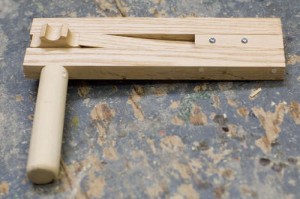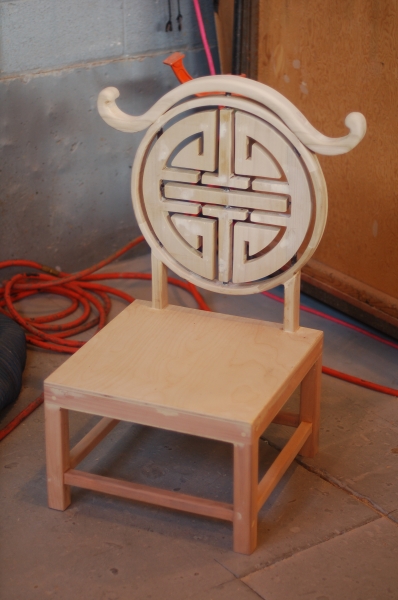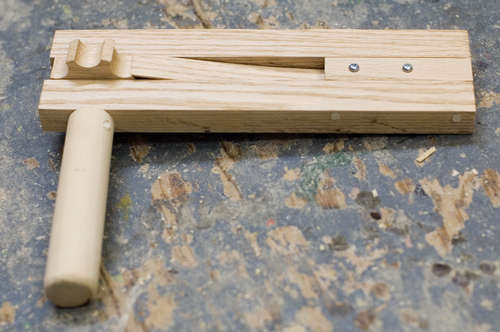The following article was published over 85 years ago. It’s an interesting look into not only what the stagehands union (now known as IATSE) did back then, but how it was viewed by some people. It’s also an interesting look at how the union was viewed back then. It’s important to note that the union – in fact, no union – is as strong as it was back in the 1920s. It would also be fascinating to look at how this article thought the union was destroying theatre, and compare it to what the state of theatre – and the union – is today. So please don’t think this article reflects any of my personal views or agenda, other than historical curiosity.
The Stage-hands’ Union
originally written by Lincoln J. Carter, Jr., 1923.
If you have ever chanced to wander down one of the alleys just off the Rialto of New York, known to all the world as Broadway, you have undoubtedly been impressed by the number of theaters which converge at various points and have noted that three or four stage doors will often be only a few feet apart. When it is considered that in this somewhat limited area lies the Mecca of all the playwrighters, producers, and site of some fifty houses, the reason for the propinquity of the stage doors is bared. On nights when the weather is mild and the shows are going on, little groups of heavy-set men, dressed in a promiscuous assortment of old clothes, congregate near these rear entrances, smoking and chatting about a wide variety of matters. At a certain moment those near one of the theatres will disappear into its depths for some minutes, then they will reappear and hustle into the house across the way. When they again return to the alley perhaps a few may rest only temporarily before the stage door of a third playhouse closes behind them. Who are they? Why, the stage hands, members of the oldest union in the theatrical business; and they have arranged a schedule permitting their drawing pay from two or three places for striking or making a set merely because they have found that the acts of each play end at different times. New York is their paradise. By this system some of them are drawing bigger salaries than many of those who perform before the footlights.
Their union began in the early years of the present century and has now grown to be one of the strongest influences in stageland. Even the clearers have an organization and the work is divided into branches. Each theatre has a crew consisting of a Head Carpenter and his two to sixteen assistants called “grips,” a Property Man with from one to four aids, a Flyman who may have one or eight men working under his orders, and an Electrician with from one to fifteen assistants. A traveling show has a much smaller staff, depending on the house to furnish most of the necessary help, and these are merely a Head Carpenter, Property Man, Flyman, and Electrician. If the production is a heavy scenic one several aids to each of these may be carried and they may call on the theatre for more.
A big Winter Garden show may have as many as thirty or forty men of this latter class and then employ a number of clearers, possibly twenty, whose duties consist only in taking off and placing furniture, rugs, decorations, or properties. One of the most comical sights to be seen behind the curtain is one of these big husky fellows calmly and leisurely walking off the stage carrying a prop, telephone, or a small chair—anything so long as it is the lightest he can get hold of—because the union rules prohibit them from moving more than one thing at a time. Apparently the regulations are thus merely to give more men a chance to work and to make an already easy effort still easier.
The stage carpenters direct the work of the hands behind the curtain. The “grips” handle the frame scenery and any painted scenery on frames or on the floor of the stage. They will touch nothing else, for if they should they would be ejected from the union.
The flymen are in the rigging loft and take care of all the drops, or scenes painted on cloth, or hanging scenery.
The property men and clearers handle all the furniture, carpets, pictures, curtains, bric-a-brac, and all else that is not painted scenery.
The house and company electricians are responsible for the lighting effects, directing them and having a number of assistants, one to each lamp, either in front or in back of the curtain.
No one is allowed by the union to touch anything outside of his own line. A carpenter or a “grip” may not handle a chair or a curtain and vice-versa. Actors are not allowed to participate.
In the larger cities the unions are very strong and they limit the membership in order that a carpenter or stage hand, who is so old that he can hardly stand, may still belong to the union. As a result, they are never overcrowded and there is no chance of the ancient members being crowded out. The natural outcome of such a combination is that pay has risen higher and higher. About fifteen years ago thirty dollars a week was considered good salary for a carpenter who now gets from fifty to fifty-five. Even the “grips” receive about forty.
Outside of the head carpenter and electrician there is absolutely no skilled labor of any kind and all that is necessary is strength and a little practice. The hours are very easy. A “grip,” for instance, goes to work at seven-thirty and is off at eleven; he only works then if a set is being made or struck. In other words, he labors about a half hour of that time and spends the other three hours in waiting to do something. The hauling crew has the hardest work, especially if their show makes many jumps.
While the actors draw no pay for rehearsals, that of the stage crews goes right on.
This is quite different from the old days before the union became so strong. It is also a reason, for the decline of one of the most spectacular things on the stage—scenic effects. In the early years of the century there were no restrictions as to what work each branch should do and as a result the entire company from the cast to the electrician lent a hand in working the mechanical devices which produced the necessary illusion. The heavy man and the ingenue of the show might operate one thing while the carpenter and the property man were doing another, and so on. With all this assistance prohibited in the present day by union rules and a heavy salary demanded for the additional aid required, it is no wonder that producers have been fighting shy of one of the devices that often used to make a play a great success solely on the merits of its scenic effects.
The union is also responsible for the ever increasing price of admission, another fact of which the general public remains ignorant. The expenses of the average show behind the curtains ranges from one thousand to fifteen hundred dollars a week. The audience never sees the men to whom this money is paid and generally remains in a blissful state of vacuity about their existence. But with such a heavy expense is it any wonder that some steps were necessary to cover it?
There have been several methods tried out in an effort to cut down this expense. One has been to bring in nonunion men. But the membership has then promptly placed “stink bombs” in the theatre, picketed it, and used other measures which have immediately caused the show to fail. The amusement public is very unstable and will let nothing interfere with the enjoyment of its pleasures. Such methods have done away with their patronage.
Still another means of getting away from the heavy burden of the stage hands has been to eliminate scenery. But in this case the public has been educated to such lavish sets that it promptly puts its foot down and the play wastes away unless some scenery is forthcoming.
So, the problem of the stage hands union is a big and a growing one. It means that admission prices will still soar much higher or else scenery must be done away with. So far no one knows the answer to the problem.
originally published in The Michigan Chimes, Vol. IV, Num. 6, March 1923 (pp. 22. 35-36)




